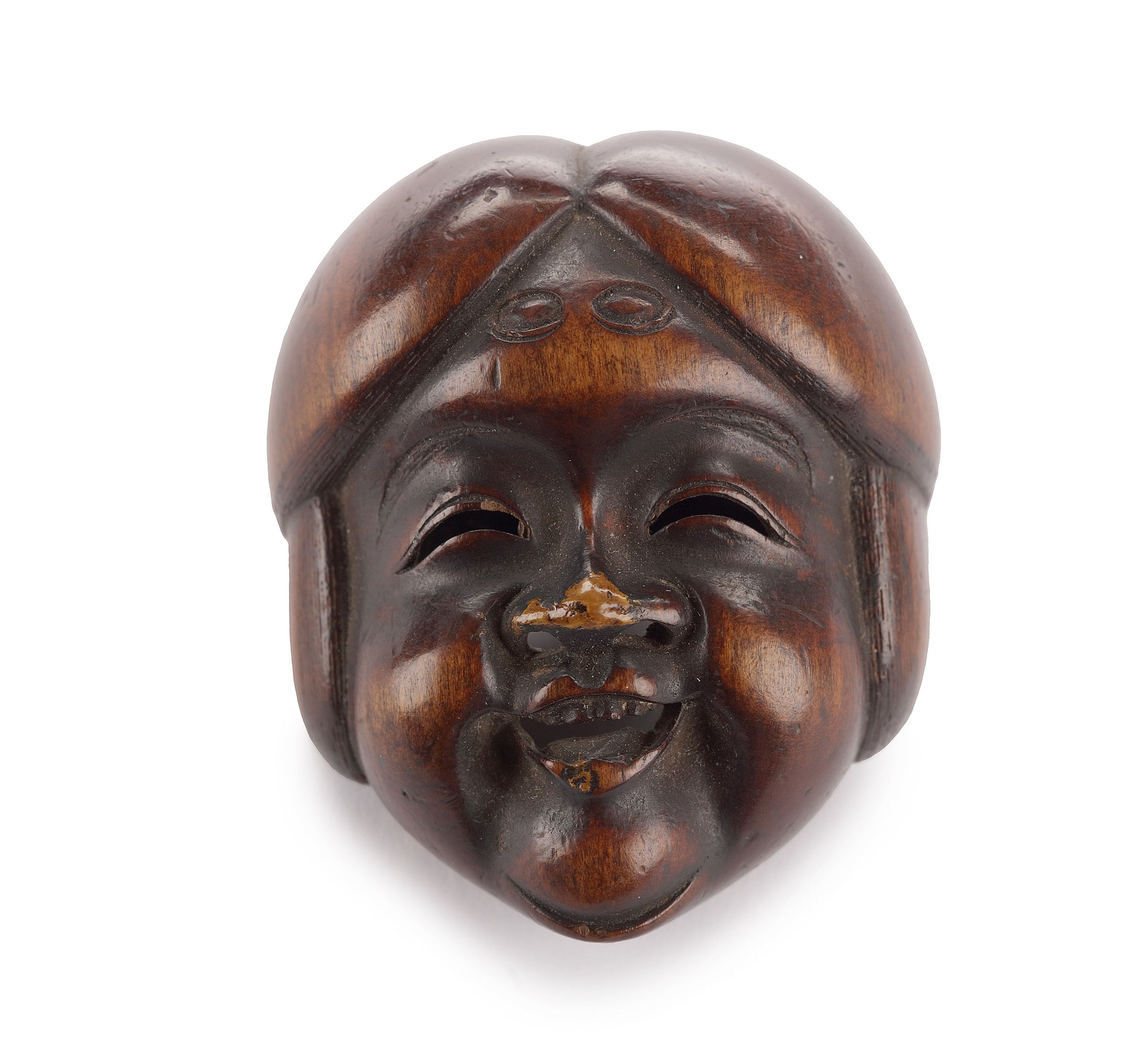Late 19th century
The face of the old lady with puffy cheeks, a nice patina and labels with collection numbers at the back, signed, with visible restorations.
H. 5.1 cm
Provenance:
The Peter E. Müller Collection, Küsnacht
Literature:
Max Rutherston, Japanese Masks, Peter E. Müller, 2017, no. 123 (ill.)
Noh (能, Nō, derived from the Sino-Japanese word for "skill" or "talent") is a major form of classical Japanese dance-drama that has been performed since the 14th century.
Noh is often based on tales from traditional literature with a supernatural being transformed into human form as a hero narrating a story. Noh integrates masks, costumes and various props in a dance-based performance, requiring highly trained actors and musicians. Emotions are primarily conveyed by stylized conventional gestures while the iconic masks represent the roles such as ghosts, women, deities, and demons. Written in late middle Japanese, the text "vividly describes the ordinary people of the twelfth to sixteenth centuries".
top of page
€650.00Price
bottom of page



